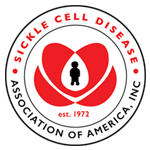September is Sickle Cell Awareness Month; Red Cross blood and platelet donations needed for patients
This school year students battling sickle cell disease and childhood cancers prepare to face challenges in the classroom unknown to their healthy peers. Many will fall behind in coursework after missing weeks of school, require tutoring and special education services. But there is a way people can help ease the struggle of these serious diseases.
September is Sickle Cell Awareness Month, making it a great time to donate blood. The Red Cross, Sickle Cell Disease Association of America, Inc., and the Sickle Cell Foundation of Georgia, Inc. formed a partnership last year to increase blood donations to support the SCD community. Over the five-year partnership, the goal is to collect 15,000 blood donations. Donations like these are essential to students living with SCD who rely heavily on lifesaving blood and platelet donations from generous and diverse donors, to help keep them in the classroom. Schedule an appointment to give blood with the American Red Cross by visiting RedCrossBlood.org, using the Red Cross Blood Donor App, calling 1-800-RED-CROSS or activating the Blood Scheduling Skill for Amazon Alexa.
“Sickle cell disease and childhood cancer profoundly impact the lives of young people— ensuring there is a diverse and sufficient blood supply is critical to their survival and ability to get back to school,” said Dr. Yvette Marie Miller, executive medical director at the Red Cross. “The Red Cross encourages diverse blood donors to roll up a sleeve this September and throughout the year to help the many diverse patients in need of blood each day.”
Blood type, like eye color, is an inherited trait passed genetically from parents. The vast majority of blood types fall into one of the major ABO groups, but for some patients with rare blood types, blood must be matched closely, beyond the primary A, B, O and AB blood types, to reduce the risk of developing complications from transfusion therapy. A patient in need is more likely to find a compatible blood match from a donor of the same race or ethnicity.
Students with sickle cell disease admit it impacts performance
A recent study conducted by researchers from Cincinnati Children’s Hospital Medical Center and University of Cincinnati College of Medicine indicates that 60% of participants reported that sickle cell disease interfered with their school performance and over 75% of participants diagnosed with the most severe sickle cell form reported receiving special education services due to absences.
Regular blood transfusions are one of the most common treatments for sickle cell disease, which have been proven to help patients by unblocking blood vessels, alleviating pain from a sickle cell crisis. Many patients require transfusions multiple times per year throughout their lifetime.
Braden Green suffered from Acute Chest Syndrome, the leading cause of death in sickle cell patients and needed blood transfusions to survive. During his recovery he missed six weeks of school and depended on instructors to help him get caught up.
His mom, Brenda Green, recalls watching the donated blood enter her son’s body. “I realized at that moment how important a blood donation is.” She vowed to become an advocate for blood donations and has since hosted several blood drives for patients in need.
“If it hadn’t been for that blood transfusion, I am not sure where we would be today.”
Blood donation information
All blood types are needed to ensure a reliable supply for patients. A blood donor card or driver’s license or two other forms of identification are required at check-in. Individuals who are 17 years of age in most states (16 with parental consent where allowed by state law), weigh at least 110 pounds and are in generally good health may be eligible to donate blood. High school students and other donors 18 years of age and younger also have to meet certain height and weight requirements.
Blood and platelet donors can save time at their next donation by using RapidPass® to complete their pre-donation reading and health history questionnaire online, on the day of their donation, before arriving at the blood drive. To get started, follow the instructions at RedCrossBlood.org/RapidPass or use the Red Cross Blood Donor App.
About the American Red Cross:
The American Red Cross shelters, feeds and provides emotional support to victims of disasters; supplies about 40 percent of the nation’s blood; teaches skills that save lives; provides international humanitarian aid; and supports military members and their families. The Red Cross is a not-for-profit organization that depends on volunteers and the generosity of the American public to perform its mission. For more information, please visit redcross.org or cruzrojaamericana.org, or visit us on Twitter at @RedCross.

